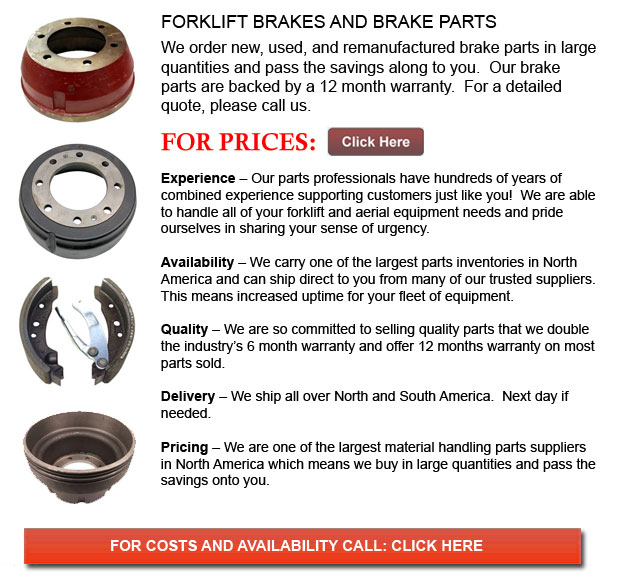
Forklift Brake - A brake drum is where the friction is provided by the brake shoes or brake pads. The pads or shoes press up against the rotating brake drum. There are several other brake drums kinds along with particular specific differences. A "break drum" will normally refer to when either shoes or pads press onto the inner surface of the drum. A "clasp brake" is the term utilized to be able to describe if shoes press against the outside of the drum. Another type of brake, referred to as a "band brake" utilizes a flexible band or belt to wrap around the outside of the drum. Where the drum is pinched in between two shoes, it could be called a "pinch brake drum." Like a typical disc brake, these kinds of brakes are rather uncommon.
Early brake drums, prior to 1955, required to be constantly adjusted to be able to compensate for wear of the shoe and drum. "Low pedal" could cause the required adjustments are not carried out satisfactorily. The motor vehicle could become hazardous and the brakes can become useless when low pedal is mixed together with brake fade.
There are several various Self-Adjusting systems used for braking available today. They can be classed into two separate categories, the RAI and RAD. RAI systems are built in systems which help the device recover from overheating. The most popular RAI makers are Lucas, Bosch, AP and Bendix. The most well-known RAD systems consist of Volkswagen, VAG, AP, Bendix and Ford recovery systems.
The self adjusting brake would usually just engage if the vehicle is reversing into a stop. This method of stopping is acceptable for use whereby all wheels use brake drums. Disc brakes are utilized on the front wheels of motor vehicles today. By working only in reverse it is less likely that the brakes will be adjusted while hot and the brake drums are expanded. If adapted while hot, "dragging brakes" can take place, which increases fuel intake and accelerates wear. A ratchet tool that becomes engaged as the hand brake is set is another way the self adjusting brakes may operate. This means is only appropriate in functions where rear brake drums are used. Whenever the emergency or parking brake actuator lever goes over a certain amount of travel, the ratchet developments an adjuster screw and the brake shoes move toward the drum.
Situated at the base of the drum sits the manual adjustment knob. It can be adjusted utilizing the hole on the opposite side of the wheel. You would have to go beneath the vehicle together with a flathead screwdriver. It is extremely essential to be able to adjust each and every wheel evenly and to move the click wheel correctly as an uneven adjustment could pull the vehicle one side during heavy braking. The most effective way so as to ensure this tiresome task is accomplished carefully is to either raise every wheel off the ground and spin it by hand while measuring how much force it takes and feeling if the shoes are dragging, or give every\each and every one the same amount of manual clicks and then perform a road test.
![]() Click to Download the pdf
Click to Download the pdf
Forklift Parts
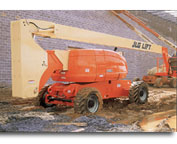
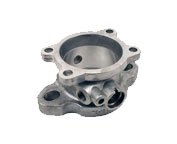
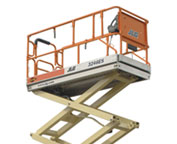
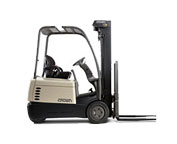
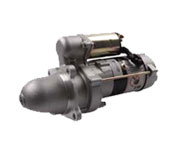
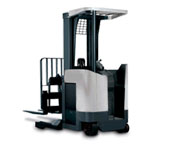

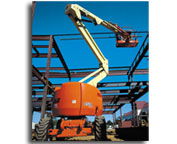
Lift Parts Express
TOLL FREE: 1-888-695-7994
LOCAL: 805-309-2395
1534 N MOORPARK RD 266
Thousand Oaks, California
forkliftpartsthousandoaks.com
Email Us
About Us


